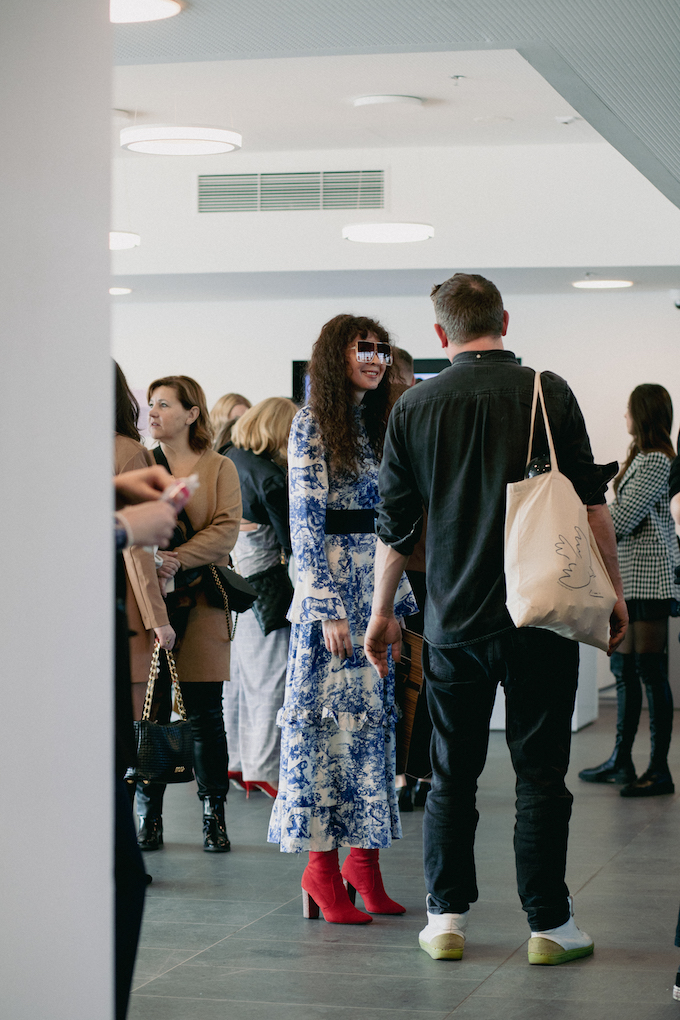The four different venues of BCEFW fashion week allowed each designer to take advantage of the opportunities in a slightly different way.
And fashion is always ready for diversity.
Starting Saturday, Pelso decorated the staircase of the National Dance Theatre with their softly undulating prints, giving the fashion week a light-hearted start with luxurious home and leisure wear.

Ph
oto: HFDA/The Sparkle Content
Nomen est omen, Pintime Clothing took us from the flat waterfront to the forested, snowy mountains. Adding another layer of cool technical clothing, we could daydream about our friends who were skiing or snowboarding abroad instead of attending fashion week.
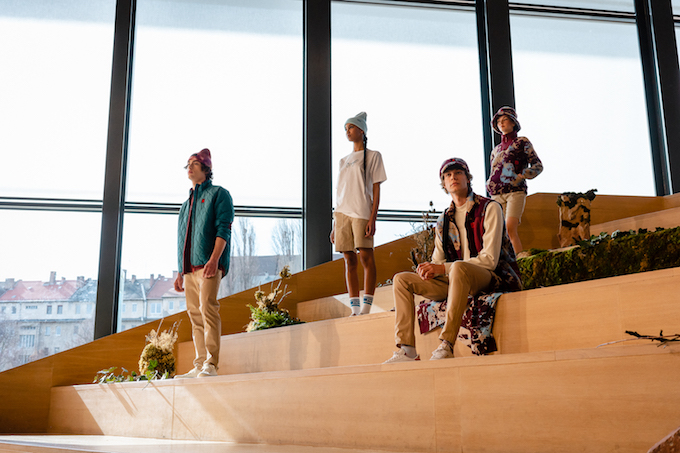 Photo: Joon Kim, @joon_filmlab
Photo: Joon Kim, @joon_filmlab
I would give the award for the most expressive installation to the BORBALA brand. Bori Ferencz, one of Hungary's greatest masters of upcycling, drew our attention to the amount of waste we produce with our thoughtless purchases by displaying discarded, used clothes. What is waste to others is treasure to her, and to make this treasure visible to all, she upcycles other people's discarded clothes with creative designs.
 Photo: Joon Kim, @joon_filmlab
Photo: Joon Kim, @joon_filmlab
DAIGE's fashion week debut last autumn so captured my heart that I was eagerly awaiting this year's staircase action. With the space prepared with art installations, it also entered my best backgrounds category. When dancer Bea Egyed appeared at the top of the stairs in a nude body suit with curly hair, I thought I was seeing myself, because I was wearing a similar body suit under my knitted dress. She definitely takes the top prize for dressing to the music, as the brand's lovely clothes brought us in the mood for autumn, even if it is still so far away.
Photo: Joon Kim, @joon_filmlab
The traditional, time-travelling style of
Katti Zoób was also reflected in the choreography of the presentation. The models arrived with numbered cards on the stage of the
Hungarian National Museum's ceremonial hall, while the actress presenting the programmes told us in a pleasant voice which beauty we could see on which model. The most original evocation of the fashion history prize goes to this presentation.
Photo: HFDA/The Sparkle Content
We were looking forward to all the shows, but if we look deep inside ourselves, we were most excited about the Kerényi Virág show. I have friends who always want to go to this show, if nothing else. The spectacle, the representation of reality created by Virág Kerényi, is the thrill of a multidimensional film.
Photo: HFDA/The Sparkle Content
The first surprise of the presentation was the live music. This time, instead of the usual DJ music, the models walked to the music of a brass band, evoking fictional characters of monarchs and heroines.
Photo: HFDA/The Sparkle Content
High-volume dresses alternated with bold styles and futuristic lines.
Photo: HFDA/The Sparkle Content
Accessorised with spectacular headpieces and Virág's trademark ultra cool bags, the models appeared not as contrasts to the books, but as if they had just stepped off the pages of a historical or fictional novel.
The prize for the most striking fantasy ensemble goes to the outfit worn by Rea Milla.
Photo: HFDA/The Sparkle Content
Guests from across the border are always refreshing among Hungarian designers. This time, two Slovak and two Polish brands have been added to the palette.
On Saturday morning, Petra Kubiková showed off her elegantly tailored outfits on the steps of the National Dance Theatre.
 Photo: Joon Kim, @joon_filmlab
Photo: Joon Kim, @joon_filmlab
On Sunday evening, Petra Kovacs told her colourful story written with clothes in the space of the ELTE University Library and Archives.
Photo: HFDA/The Sparkle Content
In this year's line-up, I was completely won over by the Polish guests.
First, SZCZYGIEL with their Sunday morning show. Strong female characters were pervasive in the line of outfits that were presented on the sunlit space of the Museum of Etnography. No coincidence, as the THINK collection is part of a series,
which tells the story of three determined women from Poland's turbulent history.
The story of the three women dates back to 1976, as they struggle to cope with social and political changes in Sopot, Poland, while striving for independence, financial freedom and love. As the plot is set in the 1970s, it also has the disco atmosphere of the time. Furthermore, the pieces in the collection are made with zero waste technology.
Photo: Joon Kim, @joon_filmlab
I cheered through the finale so much that I forgot to take a video.
The other one is RAD DUET
I have to admit that on Sunday evening I didn't expect that after Virág Kerényi's show anyone could surprise me. On the one hand, fatigue, on the other hand, the challenging lighting of the library didn't bode well. The RAD DUET team still managed to charm me.
The central element of the Irena collection is the motif of crystal glass from the "Irena" glassworks in Inowrocław. Heavier than others, and perfectly transparent, thanks to beautiful cuts it has an extraordinary ability to split light. In the collection, the crystals appear in the form of raised embroidery and numerous crystal castings.
Photo: HFDA/The Sparkle Content
Important motifs in the collection include historical references to Poland's unprecedented fate in Europe, while also evoking sustainability, respect for diversity and the exciting era of the 1970s.
Photo: HFDA/The Sparkle Content
Dressing up is a constant opportunity to explore and experiment, to discover ourselves.
The FOUR duo have a very good sense of the subject, and their choice of fabrics gives us a glimpse into their own origin story. Anett's roots are represented by African patterns and kente weaves from Ghana; the Swabian silk damask is from Bezdan, Marci's hometown in Vojvodina. The fabric is made on 180-year-old wooden jacquard looms in a border town in the northernmost part of Serbia, which gives the garments an additional historical and traditional character.
They also presented the coolest jumpsuit at fashion week.
Photo: Joon Kim, @joon_filmlab
The whole fashion week was marked by exclusivity, with martinis served in spectacular glasses at every venue. Coming from the middle of a course of antibiotics after dental surgery, I didn't get a sip, but my fellow fashion fans said the service and flavours were exquisite.
 Photo: Joon Kim, @joon_filmlab
Photo: Joon Kim, @joon_filmlab
Instead of drinks, my mood was lifted by pleasant encounters: with art, with old and new acquaintances, and with myself on each of these occasions.
On this topic, I would give the award for the most artistic background to Kata Szegedi, who presented her autumn/winter collection in front of and inspired by the works of Márton Nemes, a Hungarian painter currently living in New York.
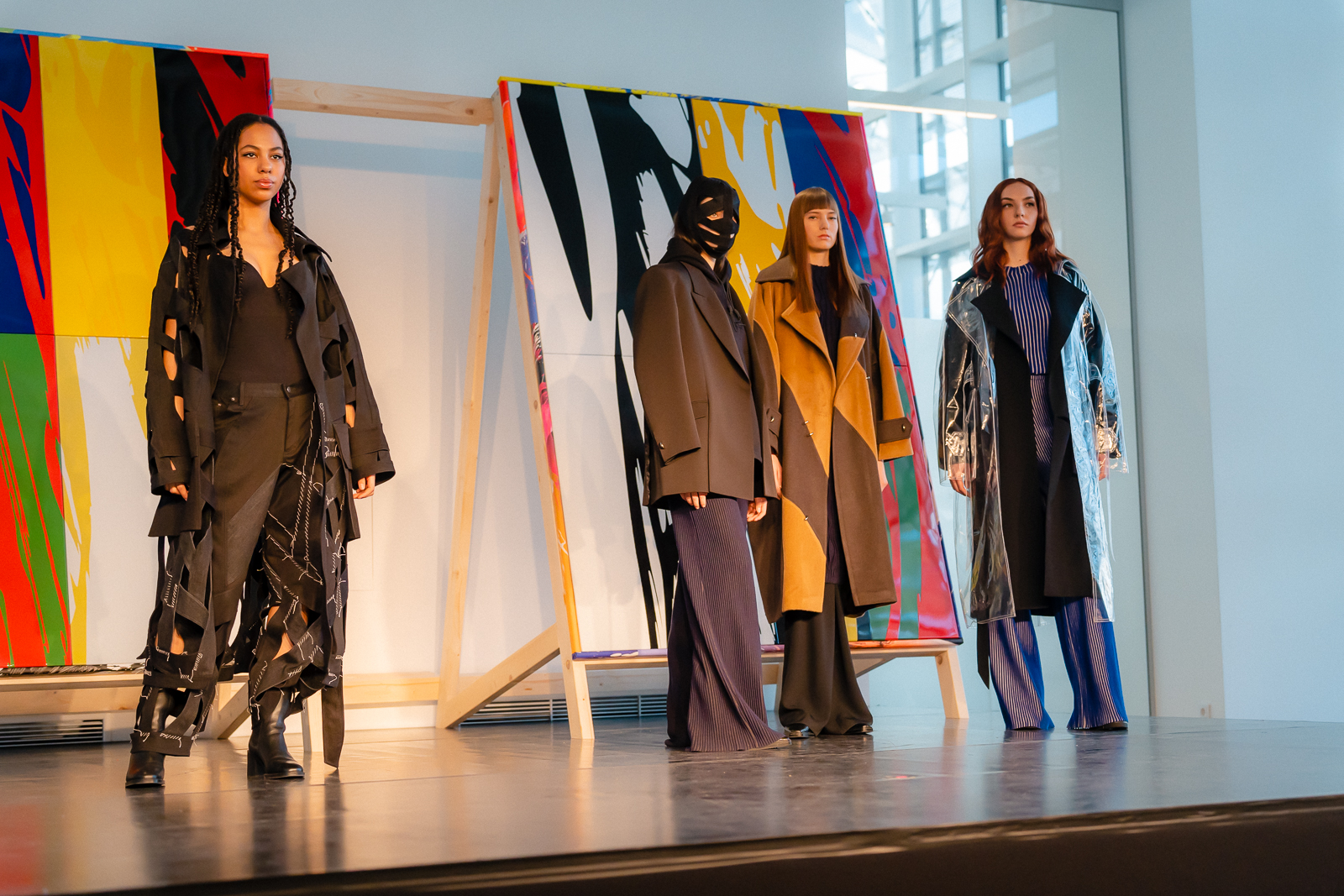 Photo: Joon Kim, @joon_filmlab
Photo: Joon Kim, @joon_filmlab
The abstractions of the artist, who works in the American metropolis now, were perfectly suited to the space of the Museum, where the duo Kata Szegedi and Dani Benus showcased their urbane, futuristic outfits, which were as thought-provoking as the paintings.
It's been a long time since I met Márton, so I was thrilled listening to him.
BCEFW series will be continued with detailed reviews on some collections.
_______
Cover photo: THE FOUR
Credits:
HFDA/The Sparkle Content
Joon Kim, @joon_filmlab
Dina Sungatullina


 Photo: HFDA/The Sparkle Content
Photo: HFDA/The Sparkle Content  Photo: Joon Kim, @joon_filmlab
Photo: Joon Kim, @joon_filmlab Photo: Joon Kim, @joon_filmlab
Photo: Joon Kim, @joon_filmlab

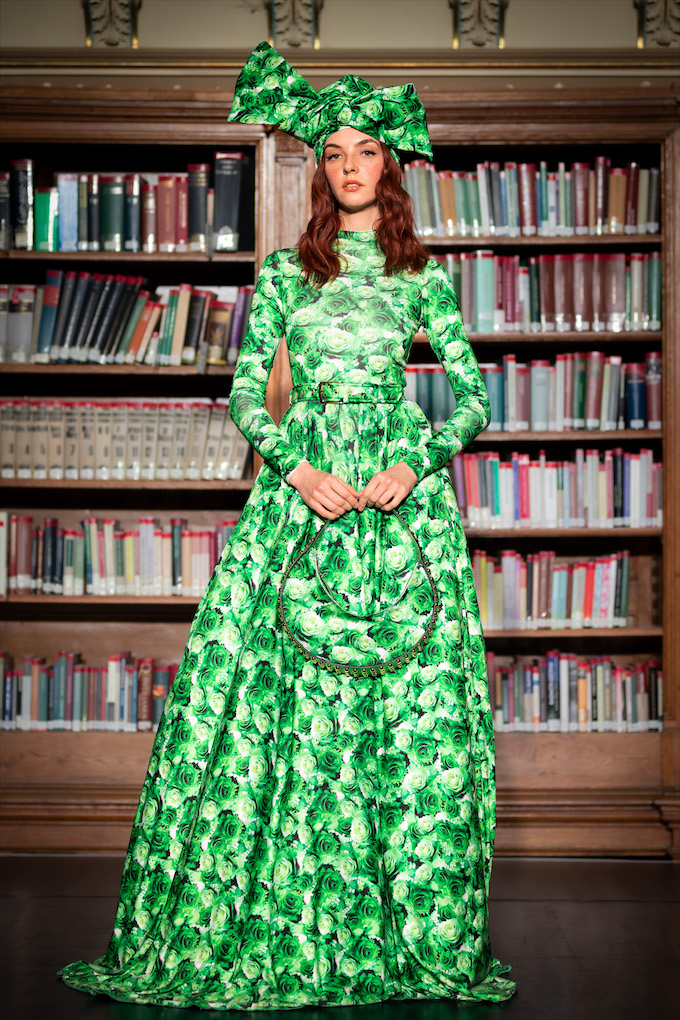


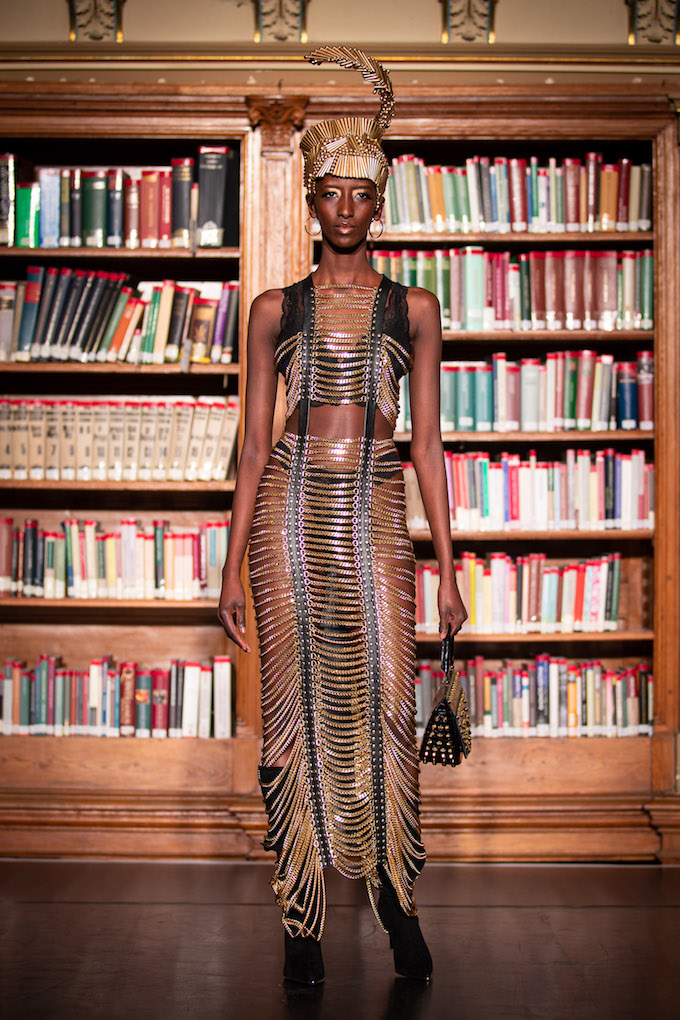
 Photo: Joon Kim, @joon_filmlab
Photo: Joon Kim, @joon_filmlab
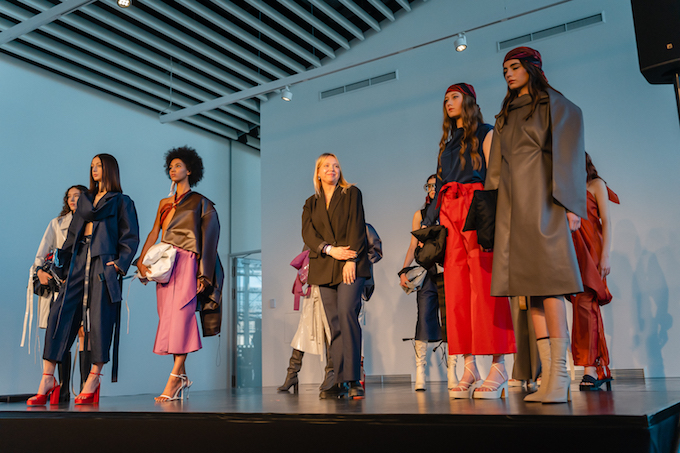



 Photo: Joon Kim, @joon_filmlab
Photo: Joon Kim, @joon_filmlab Photo: Joon Kim, @joon_filmlab
Photo: Joon Kim, @joon_filmlab